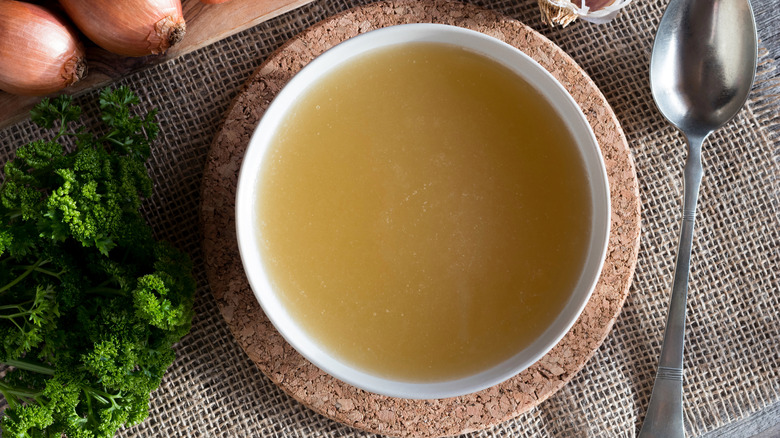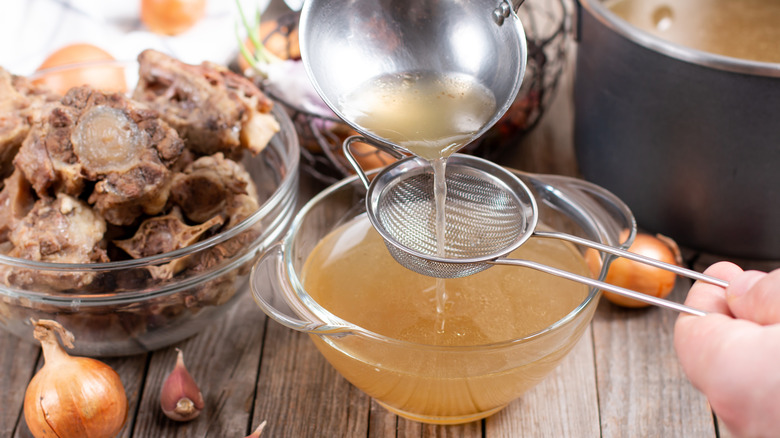How To Quickly Cool A Pot Of Broth To Keep It In The Safe Zone
Once your pot of homemade broth is off the heat and strained, you're going to want to cool it as quickly as possible. Yes, the refrigerator is its destination, but taking it straight from the stovetop to the fridge poses some safety concerns. Luckily, there are a few tricks to quickly cooling down your broth before it goes in for cold storage.
If you consider how long it takes to bring a huge pot of water to a boil versus a small saucepan, you can apply that same concept to cooling; one of the easiest ways to get the broth's temperature down swiftly is to separate it into smaller containers. But you can speed up the cooling process even more (and without dirtying extra dishes) by giving those containers an ice water bath — just fill a large bowl with ice and water and nestle the container of broth inside. Stirring it continuously will also help expedite the process. If that's an extra step you don't feel like taking, you can also drop a few ice cubes directly into the broth. But keep in mind this may dilute it a bit, so some more seasoning may be necessary when you're ready to use it.
Alternatively, many pro chefs trying to cut cooling time have found the use of an ice paddle handy; made from plastics that are certified safe by the NSF, it can quickly cool down large quantities of liquids, like soups and broths, from the inside out.
Why it's dangerous to take broth straight to the fridge
While popping the broth immediately into the fridge may seem like the easiest and best course of action, it is a common mistake people make. The goal of cooling the broth (or any hot food, for that matter) is to get it into the temperature-safe zone where the risk of bacterial growth is minimal. You want to reach a temperature below 40 degrees Fahrenheit, spending as little time as possible at temperatures between 40 and 140 degrees — what the USDA calls the food danger zone.
A large container full of piping hot liquid will take a long time to cool down, even in the fridge. The broth will hang out in that danger zone for longer than you want it to, giving bacteria the opportunity to proliferate. That hot broth will also lower the overall temperature of your fridge, potentially bringing all of its contents into the danger zone with it. Ultimately, it's a food storage lose-lose that's best avoided.

